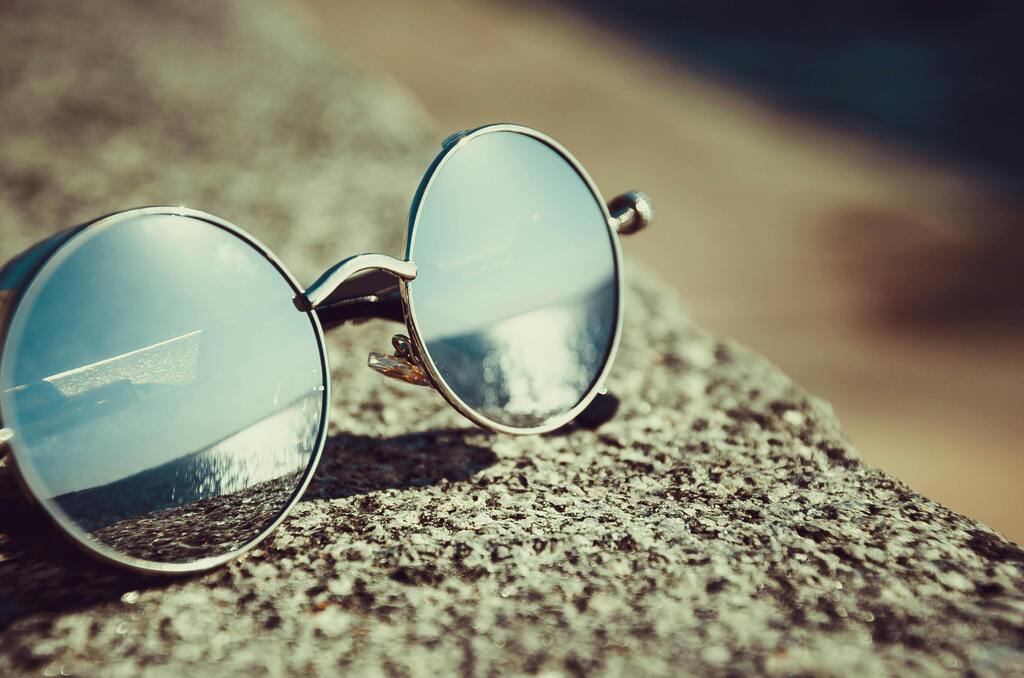Mirrors and reflective sunglasses are both made using the science of reflection, but the processes behind them are surprisingly different. While mirrors are designed to provide a crisp, undistorted reflection of objects, reflective sunglasses are engineered to protect your eyes from sunlight while still allowing you to see clearly.
In this article, we’ll explore how mirrors and mirrored sunglasses are made, the technology behind their reflective coatings, and the history of these everyday but fascinating items.

Mirrors - Reflection with a Purpose
A mirror is essentially a piece of glass with a highly reflective coating on one side—usually a thin layer of metal. The key to its reflective ability lies in how light bounces off that metallic surface.
Glass – provides a smooth surface and structural support
Aluminum or silver coating – reflects light
Protective backing – seals and protects the reflective layer
Flat glass sheets are cleaned and polished to remove all dust, oils, and imperfections. This ensures a flawless reflection once the coating is applied.
The cleaned glass is coated with a thin layer of metal, typically silver or aluminum. There are two main methods for this:
Chemical silvering: A chemical reaction deposits a thin layer of silver onto the glass. This is common for household mirrors.
Vacuum deposition: Aluminum or other metals are vaporized in a vacuum chamber and deposited onto the glass. This method is used for high-precision mirrors, like those in telescopes.
To preserve the reflective coating and prevent tarnishing, mirrors are sealed with layers of paint or protective resin on the back side.
Once the mirror is coated and sealed, it's cut to size and often edged or beveled for safety and appearance.
Reflective or mirrored sunglasses also use a reflective coating—but unlike mirrors, they must allow partial light transmission so you can see through them.
These sunglasses use lens materials like:
Polycarbonate – lightweight and impact-resistant
CR-39 plastic – high optical clarity
Glass – less common but very scratch-resistant
Lenses are formed using molds, and often include UV-blocking additives during the manufacturing process.
A thin metallic layer, often made of titanium, chromium, or other metals, is applied to the front surface of the lenses using vacuum deposition. This layer reflects sunlight away from the eyes.
The coating thickness determines how reflective or colorful the lenses appear. Popular colors include silver, gold, blue, and green.
Most mirrored sunglasses also include:
Anti-scratch coatings
Anti-reflective coatings on the inside surface (to reduce glare)
Polarization (optional) to reduce glare from water or pavement
Ancient mirrors were made from polished stone, obsidian, or metal surfaces.
Glass-backed mirrors were developed in first-century Rome, but widespread use began in 16th-century Venice, where craftsmen created high-quality silver-backed mirrors.
Modern mirror production became industrialized in the 19th century, making them affordable and commonplace.
Developed in the 1930s by Bausch & Lomb for U.S. military pilots, mirrored sunglasses reduced glare at high altitudes.
This led to the creation of the now-iconic Ray-Ban Aviators.
Over time, mirrored coatings became popular in sports, fashion, and tactical eyewear for both function and style.

Reflective Sunglasses
| Feature | Mirrors | Reflective Sunglasses |
|---|---|---|
| Purpose | Full light reflection | Partial reflection, light filtering |
| Coating | Back surface (second-surface mirror) | Front surface |
| Light Transmission | 0% (opaque) | 10–40% (depending on tint) |
| Material | Glass + metal | Plastic or polycarbonate + metal |
| Visibility | You see yourself | You see through the lens |

Whether you’re checking your outfit in the bathroom mirror or shielding your eyes from the sun with a sleek pair of mirrored sunglasses, both items rely on similar principles of physics—but are engineered for very different purposes.
Mirrors offer total reflection, giving a true image of the world around you. Reflective sunglasses provide selective reflection, reducing glare and protecting your eyes while letting in just enough light to see clearly.
These are perfect examples of how science meets design in everyday life—where a simple concept like reflection turns into essential tools for comfort, safety, and even fashion.
Keywords: how mirrors are made, mirror manufacturing process, how reflective sunglasses are made, mirrored lens technology, history of mirrors, history of sunglasses, types of reflective coatings, sunglasses with mirror finish.